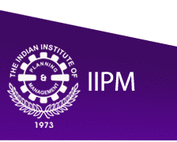Fairs (melas, as we better know them) have always been an integral part of the Indian life style. It’s difficult to find a person in the country who has never visited a fair or come across a Bollywood flick with a typical 1970s storyline of family separation and re-union, all happening in melas (mostly Kumbh mela). Well, the creative brains of our marketing world know this better than anyone else! After clichéd cult of ‘Lost and Found’ mela brothers created by script writers, it’s these marketing honchos who have brought fairs to the centre-stage by using them as a platform to market products. So much so that big fairs like the Mahakumbh held in Haridwar, Lord Jagannath’s car festival in Puri and Surajkund mela et al now find prime importance when the companies plan for their BTL activities.
But certainly, the roots of such mela marketing are not just desi by any means. In USA, for example, in 2001 the sports drink giant ‘Gatorade’ tried to cash in on the theme of Thanksgiving and invested millions in marketing its drink during the Thanksgiving fairs across the country. Later, in 2008, they even came up with a TV commercial Replay which was also built around a match that has always been played on the eve of Thanksgiving.
Not that Indian companies were alien to this – but till now, mela marketing simply was seen as a social service for rural folk (aka e-choupals, for example). But this year’s various melas, including the iconic Maha Kumbh Mela that started in January and lasted till the end of April, have seen surprisingly huge investments in product marketing campaigns. In the Kumbh Mela, the element of novelty was 26 brands marketing their products using the mela as the focal point of their campaign. For instance, Dettol marketed itself with a tagline, “Kumbh mein Snaan ek baar, Dettol mein Snaan baar-baar” (Bathe in the holy water of Kumbh Mela once, bathe in the water with Dettol regularly). Boroline came up with “Kumbh se Punya Kamao, Boroline se Achchi Twacha Banao” (Attain bliss by visiting the Kumbh Mela, attain a softer skin by using Boroline). The question is, does mela marketing work? Especially if you’re not in the FMCG industry?
Shankar Das, Marketing Head-Boroline, G.D. Pharmaceuticals, tells 4Ps B&M, “You cannot think of a better direct promotion of your brand than what you get in these fairs. These fairs attract huge chunks of people from different strata of the society at one place for the longest period of time. And all this while, they are exposed to your brand. The impact is substantial and it does have an edge over other modes of marketing.” Mela marketing has proved to be a beneficial strategy and the company has incorporated it across regional melas in places like Orissa and Gujarat. Their next destination is Jharkhand and the regional fair that is going to be organised in the coming months.
For more articles, Click on IIPM Article.
Source : IIPM Editorial, 2011.
An Initiative of IIPM, Malay Chaudhuri and Arindam chaudhuri (Renowned Management Guru and Economist).
For More IIPM Info, Visit below mentioned IIPM articles.
IIPM ranked No 1 B-School in India
domain-b.com : IIPM ranked ahead of IIMs
IIPM: Management Education India
Prof. Rajita Chaudhuri's Website
IIPM in sync with the best of the business world.......
Arindam Chaudhuri on Internet.....
Arindam Chaudhuri: We need Hazare's leadership
Professor Arindam Chaudhuri - A Man For The Society....
IIPM: Indian Institute of Planning and Management
--------------------------------------------------------------------------------------------------------------------------


 RSS Feed
RSS Feed